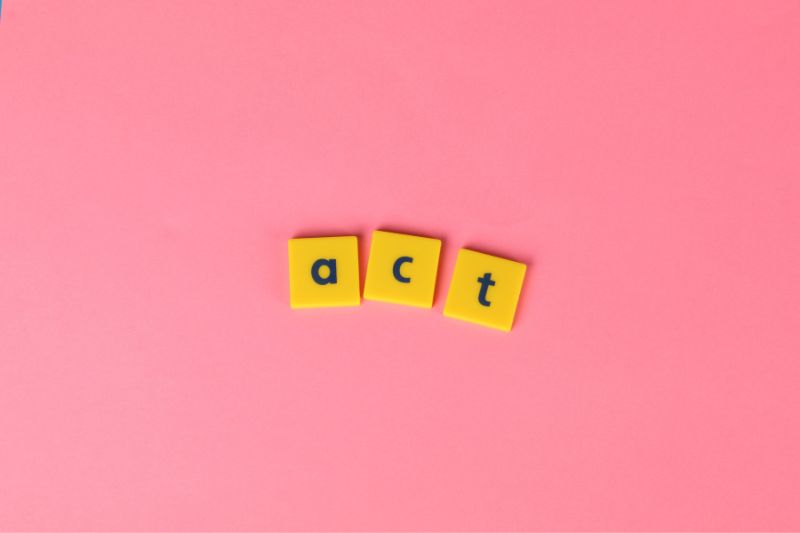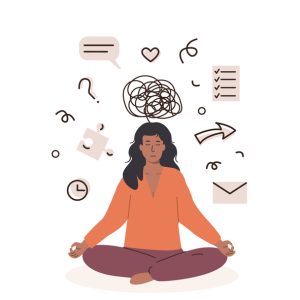As thoughts begin to turn from planning picnics and BBQ’s to planning school lunches, our parental priorities shift from “summer fun” to “get it done.” The back-to-school transition helps set the stage for a successful school year. It is a great opportunity to help equip kids with the tools they’ll need for a smooth start. But for parents and caregivers of neurodivergent students, this time of year can feel especially overwhelming, as it is so much more than just pencils and pens that our students need. In fact, parents of children who have learning and thinking differences are more likely than other parents to say they feel stressed (39% vs. 28%, respectively), unprepared (19% vs. 12%), scared (17% vs. 9%), and/or lonely (10% vs. 3%) when it comes to back-to-school season. This week, I’ll share practical tips for how you can survive and thrive during this back-to-school season.
lunches, our parental priorities shift from “summer fun” to “get it done.” The back-to-school transition helps set the stage for a successful school year. It is a great opportunity to help equip kids with the tools they’ll need for a smooth start. But for parents and caregivers of neurodivergent students, this time of year can feel especially overwhelming, as it is so much more than just pencils and pens that our students need. In fact, parents of children who have learning and thinking differences are more likely than other parents to say they feel stressed (39% vs. 28%, respectively), unprepared (19% vs. 12%), scared (17% vs. 9%), and/or lonely (10% vs. 3%) when it comes to back-to-school season. This week, I’ll share practical tips for how you can survive and thrive during this back-to-school season.
Adjust Expectations
As the parent or caregiver of a student with unique learning needs, you know that being flexible is essential. Why not give yourself that same space (and grace) to be able to NOT do it all, and remain flexible with what you’d like to accomplish? Setting too many goals at once – “I’ll arrange playdates every weekend,” “We will eat breakfast as a family every day,” or “I’ll volunteer 5 hours in the classroom” – can feel overwhelming to both you AND your child.
Families living with ADHD can be especially sensitive to changes in routines. When new tasks are thrown into existing ones, confusion and frustration often come along for the ride. This year, consider viewing back-to-school tasks through the lens of what is truly important to your family’s needs. Instead of one long “to-do” list to slog through, focus on one or two things that are truly important for your family right now. By limiting your goals and adjusting your expectations, you’ll minimize pressure on everybody and reduce family stress.
Start Preparations Now with Low-Key Conversations
Now is a great time to begin easy conversations about returning to school – asking what your child is most excited about doing or seeing when they go back, what foods they look forward to in their lunchbox, who they’ll high-five first, etc. These are no-pressure conversations that signal change is afoot. Start with “Tell me what you know about….” this new grade or this new school. You’ll get a sense of their level of understanding and be better prepared to meet them where they are.
By pairing these conversations with visual cues at home such as a countdown calendar, displaying photos of familiar school staff and classmates, meeting their teacher or walking the hallways of a new school, you’ll help make going “back to school” seem less frightening and more familiar. These conversations are just as important with college age students so set aside some time to start now!
Set a Positive Course with Collaboration
Setting a positive course for this year depends on collaborating with your son or daughter to establish clear goals and useful strategies. Kids with ADHD spend a lot of time listening to what they could do differently from caring adults, friends,

coaches, etc. By including some of their opinions in whatever program you create, you increase their buy-in. When they feel like their ideas matter, these kids are far more likely to cooperate. So, start this school year with a calm, honest family conversation.This chat sets the tone for how you will work together to make it a success.
Take the Time to Reflect First
Before you sit down with your son or daughter, consider your responses to these questions:
- What do you hope for your child or teen this year?
- What went well last year and why?
- Can you identify any behaviors or decisions that made a positive difference?
- What were some of the challenges? What improved them?
When you’re ready for your conversation, ask them similar questions. Offer some of your reflections and see if you can agree on some goals for this fall. Write these down and, together, choose one to start with. It can be fun to treat this as a “time capsule” too: make a copy and place it in an envelope to be opened at the end of the semester. Then you can review how things actually worked out–the successes and the challenges.- kept in an envelope until the end of the year (or month, semester, etc.), then reviewed together and discussed.
Practice time management skills now
Many children who are neurodivergent struggle with time and get frustrated.This makes morning routines tricky and causes conflict.

It’s harder for them to feel time, plan for things accordingly and then actually do them. They tend to overestimate how long a task will take and how much effort it entails. Then they feel overwhelmed, procrastinate or avoid it altogether. Or, they underestimate how long a task will take and the effort involved. Then they leave things until the last minute, rush to complete them and feel very stressed in the process.
Use Backwards Design to Teach Time and Planning Skills
When planning school schedules, practice using backwards design with your child to help them plan – in reverse – for where they want to be (or want to have done) in the future. This means working backwards by starting with the end goal and allocating time accordingly. Sit down in advance and review what needs to be accomplished and how long things actually take.
“You have to be at school by 7:30. It takes twenty minutes to ride your bike, lock it up and get to homeroom so that puts you at 7:10. Before that, you want to eat breakfast (ten minutes), go to the bathroom, brush your teeth and get dressed (fifteen minutes) which puts you at 6:55 am. Then you have to wake up. Usually you hit the snooze button once or twice which lasts another fifteen minutes. So that means you have to set my alarm for 6:40 if everything goes perfectly. Maybe we should set it earlier for this week, just in case.”
Backwards design benefits kids by teaching them how to estimate time, develop the ability to sequence events and improve planning and prioritizing.
Notice the Positive to Raise Self-esteem
Parents of neurodivergent children are 2.4 x’s more likely to experience challenges related to their mental health than their parent peers, making self care strategies an essential component of your back-to-school parenting toolkit. Equally important, however, is to extend these practices to neurodivergent learners with ADHD. They benefit from explicit support and instruction in identifying and incorporating positive events in their day that nurture self-esteem.
Spend a few minutes at the end of the day and check in with your child, asking “What are two things that went well today? What were your favorite times of the day?” Many kids with ADHD tend towards negative mindsets marked by internal self-criticism and judgment. Shifting their thinking not only nurtures growth mindsets but also self-care. By noticing what is working, they start to feel more confident and courageous. Set aside a time to review two highs and one low of the day. Often dinner is a good place to do this. One of my clients calls this talking about “the happy and the crappy;” for another it’s “the rose and the thorn.”
Your Self-Care Makes Family Life Stronger
Noticing the positive applies to you too. Self-care goals or guidelines for this year bc when parents are stressed kids pick it up and act out. As adults, we tend to think acts of self care look like bubble baths, a piece of chocolate, reading a book, etc. But setting boundaries, keeping organized, and lowering the pressure of unrealistic expectations also provide much needed relief. Before tending to your child, start this school year off on the right foot by reflecting on your capacity, your limits and treating yourself with compassion. Then you can show up and guide your child towards thriving once classes begin.
Ready, Set…LET’S GO!
Back to school will be a breeze for you and your child with neurodivergence when it includes collaborative conversations, time for community support, opportunities to practice time management, setting realistic expectations, and room for personal growth and positive reinforcement. Help your child or teen navigate this shift back to school by easing them into the changes ahead with the tips above, and you’ll feel ready to tackle this time of year together!


 some circumstances, it’s not completely a lie if a child or teen truly doesn’t
some circumstances, it’s not completely a lie if a child or teen truly doesn’t  do not follow agreed upon house agreements and when they are oppositional. Withdrawals can result in the loss of earned privileges. It’s more helpful to set up consequences in advance rather than create them on the fly when you are distressed.
do not follow agreed upon house agreements and when they are oppositional. Withdrawals can result in the loss of earned privileges. It’s more helpful to set up consequences in advance rather than create them on the fly when you are distressed. 
 the dark corners in your mind of insecurity and self-doubt. Wasn’t the lasagna a bit soggy? Were the games too babyish? Did people really have fun or just say so to be polite? Despite the outward success of the day, you’ve circled right back to feeling like a failure with a bit of shame and self loathing thrown in for good measure. Your underlying depression and its symptoms have officially re-entered the arena.
the dark corners in your mind of insecurity and self-doubt. Wasn’t the lasagna a bit soggy? Were the games too babyish? Did people really have fun or just say so to be polite? Despite the outward success of the day, you’ve circled right back to feeling like a failure with a bit of shame and self loathing thrown in for good measure. Your underlying depression and its symptoms have officially re-entered the arena.  Depression is a complex mental health condition with a variety of symptoms that can affect somebody’s physicial, cognitive and emotional functioning. Typical signs of depression include: feelings of sadness, hopelessness or worthless; irritability; changes in sleep patterns (too much, interrupted sleep or too little); lethargy including; physical problems (including headaches or digestive issues) with no clear cause; suicidal thoughts or attempts; increased use of drugs or alcohol; isolation and withdrawal from social contact.
Depression is a complex mental health condition with a variety of symptoms that can affect somebody’s physicial, cognitive and emotional functioning. Typical signs of depression include: feelings of sadness, hopelessness or worthless; irritability; changes in sleep patterns (too much, interrupted sleep or too little); lethargy including; physical problems (including headaches or digestive issues) with no clear cause; suicidal thoughts or attempts; increased use of drugs or alcohol; isolation and withdrawal from social contact.  People with depression and ADHD may experience chronic brain fog due to feeling emotionally overloaded in conjunction with their biological attentional challenges. They may also experience low motivation, a lack of joy from activities they previously enjoyed, persistent low energy and profound sadness.
People with depression and ADHD may experience chronic brain fog due to feeling emotionally overloaded in conjunction with their biological attentional challenges. They may also experience low motivation, a lack of joy from activities they previously enjoyed, persistent low energy and profound sadness.
 overwhelm, and depression than boys and men. So it can be expected that there are female-specific symptoms and manifestations of ADHD at different stages of a woman’s life. Moreover, there is evidence of the relationship between declining hormone levels, mood and cognitive capacity. Let’s take a closer look at how menopause can affect ADHD and what you can expect in this season of your life.
overwhelm, and depression than boys and men. So it can be expected that there are female-specific symptoms and manifestations of ADHD at different stages of a woman’s life. Moreover, there is evidence of the relationship between declining hormone levels, mood and cognitive capacity. Let’s take a closer look at how menopause can affect ADHD and what you can expect in this season of your life. issues, and time-management difficulties. And women over 60 reported struggling with brain fog and memory issues, procrastination, and overwhelm. It is still not clear whether menopause amplifies ADHD symptoms or vice versa. Regardless, these and other issues like difficulty sleeping and mood swings need to be managed.
issues, and time-management difficulties. And women over 60 reported struggling with brain fog and memory issues, procrastination, and overwhelm. It is still not clear whether menopause amplifies ADHD symptoms or vice versa. Regardless, these and other issues like difficulty sleeping and mood swings need to be managed.
 Are you ever so engrossed in an activity you love that you completely lose track of time? Does it seem like you lose sense of where you are and what’s happening around you? And when you snap back into the reality of what’s going on around you, are you disoriented? People with ADHD and neurodivergence are more likely to experience this heightened state of focus known as “hyperfixation” than neurotypical children and adults. Hyperfixation is defined as full immersion in something of interest to a point where a person appears to ‘tune out’ everything else. While this can be viewed as a productivity superpower, it can also draw you into unproductive, procrastinating activities. That’s part of what makes it both exhilarating and frustrating.
Are you ever so engrossed in an activity you love that you completely lose track of time? Does it seem like you lose sense of where you are and what’s happening around you? And when you snap back into the reality of what’s going on around you, are you disoriented? People with ADHD and neurodivergence are more likely to experience this heightened state of focus known as “hyperfixation” than neurotypical children and adults. Hyperfixation is defined as full immersion in something of interest to a point where a person appears to ‘tune out’ everything else. While this can be viewed as a productivity superpower, it can also draw you into unproductive, procrastinating activities. That’s part of what makes it both exhilarating and frustrating. On the other hand, hyperfocus is task-driven and is often accompanied by clear goals and a sense of purpose. It’s less about enjoyment and satisfaction and more about getting into the flow of an activity. It’s a state of being fully engaged in a task for which you have a clear sense of direction. Hyperfocus is linked to increased productivity and a sense of accomplishment.
On the other hand, hyperfocus is task-driven and is often accompanied by clear goals and a sense of purpose. It’s less about enjoyment and satisfaction and more about getting into the flow of an activity. It’s a state of being fully engaged in a task for which you have a clear sense of direction. Hyperfocus is linked to increased productivity and a sense of accomplishment. Here are four strategies to assist adults with ADHD with managing hyperfixation and using it as a superpower:
Here are four strategies to assist adults with ADHD with managing hyperfixation and using it as a superpower: 
 While it’s unrealistic to eliminate negative thinking, reducing its power and influence is crucial for fostering self esteem and resilience–two key issues for women.
While it’s unrealistic to eliminate negative thinking, reducing its power and influence is crucial for fostering self esteem and resilience–two key issues for women.  The most powerful tool women have to counter negative thinking is self-esteem and its cousin, resilience. Confidence empowers you to make decisions, get through life’s ups and downs and recover after setbacks. It’s your inner ally. Confidence also helps quiet the inner critic by reassuring it that your wise, inner self has the resources to meet whatever challenges you are facing. So while you’re quieting your inner critic, turn up the volume on the voice that nurtures you with compassion, kindness and support.
The most powerful tool women have to counter negative thinking is self-esteem and its cousin, resilience. Confidence empowers you to make decisions, get through life’s ups and downs and recover after setbacks. It’s your inner ally. Confidence also helps quiet the inner critic by reassuring it that your wise, inner self has the resources to meet whatever challenges you are facing. So while you’re quieting your inner critic, turn up the volume on the voice that nurtures you with compassion, kindness and support. If you’ve been stuck in a pattern of knocking yourself down, learning to pull yourself back up takes A LOT of practice and grit. Learning to control the volume on that negative voice is a life skill based on persistent resilience and genuine self-esteem. It’s one step at a time so stay patient because two steps forward and one step backwards is still forward motion.
If you’ve been stuck in a pattern of knocking yourself down, learning to pull yourself back up takes A LOT of practice and grit. Learning to control the volume on that negative voice is a life skill based on persistent resilience and genuine self-esteem. It’s one step at a time so stay patient because two steps forward and one step backwards is still forward motion.  Dear Dr. Saline,
Dear Dr. Saline, Let’s tackle this pattern by first looking at the impact of ambiguity on a task. Unstructured projects–whether they are for work or school–can paralyze people of all ages with ADHD. A lack of clarity about what you are supposed to do, how to proceed and where to begin can thwart the best of intentions. Plus, the ambiguity of a task makes
Let’s tackle this pattern by first looking at the impact of ambiguity on a task. Unstructured projects–whether they are for work or school–can paralyze people of all ages with ADHD. A lack of clarity about what you are supposed to do, how to proceed and where to begin can thwart the best of intentions. Plus, the ambiguity of a task makes  The greatest barrier to initiation is your perception of the task. You may understand the need of doing something but lack the interest, skill or focus to do it. Make tasks small enough that beginning them is within your reach. For example, instead of worrying about the entire research project, make it a goal to just work on the intro or hypothesis. Consider how long you can concentrate and for how long: then create work periods based on that information. Build in short and longer breaks, using timers and notes to get you back to what you were doing.
The greatest barrier to initiation is your perception of the task. You may understand the need of doing something but lack the interest, skill or focus to do it. Make tasks small enough that beginning them is within your reach. For example, instead of worrying about the entire research project, make it a goal to just work on the intro or hypothesis. Consider how long you can concentrate and for how long: then create work periods based on that information. Build in short and longer breaks, using timers and notes to get you back to what you were doing.  The size of the task affects initiation, a critical element of motivation. If a task seems insurmountable, it’s much more difficult to start it. This is especially true for neurodivergent thinkers. So, break things down into chunks and start small. If you still can’t begin, then the task is still too big. Make it smaller. Keep a list of three tasks on a list, either on paper or digitally, and cross each one out as you complete it. There’s so much satisfaction in knowing you’re making progress. Not surprisingly, this will also give you more motivation to keep going until the entire project is completed. You are looking for small wins to build confidence and energy so you can keep going.
The size of the task affects initiation, a critical element of motivation. If a task seems insurmountable, it’s much more difficult to start it. This is especially true for neurodivergent thinkers. So, break things down into chunks and start small. If you still can’t begin, then the task is still too big. Make it smaller. Keep a list of three tasks on a list, either on paper or digitally, and cross each one out as you complete it. There’s so much satisfaction in knowing you’re making progress. Not surprisingly, this will also give you more motivation to keep going until the entire project is completed. You are looking for small wins to build confidence and energy so you can keep going. In addition to initiation, focus is another important element of motivation. People with ADHD and chronic difficulties with inattention have some areas where they can pay attention with no problem. They lack attention for uninteresting tasks.
In addition to initiation, focus is another important element of motivation. People with ADHD and chronic difficulties with inattention have some areas where they can pay attention with no problem. They lack attention for uninteresting tasks.  Self-evaluation, also known as metacognitive awareness, is the last executive functioning skill to coalesce, in the mid to late twenties for people with ADHD. Self-evaluation refers to the abilities for self-understanding, judgment and decision-making. Better self-awareness fosters academic and social competence.
Self-evaluation, also known as metacognitive awareness, is the last executive functioning skill to coalesce, in the mid to late twenties for people with ADHD. Self-evaluation refers to the abilities for self-understanding, judgment and decision-making. Better self-awareness fosters academic and social competence. Dear Dr. Saline,
Dear Dr. Saline, It’s wonderful that you have been diagnosed and are working on making positive changes for yourself and your family. Anger is often a difficult emotion to manage for kids and adults with ADHD.
It’s wonderful that you have been diagnosed and are working on making positive changes for yourself and your family. Anger is often a difficult emotion to manage for kids and adults with ADHD. 
 Now that you’ve stopped the oncoming meltdown and put yourself in a neutral environment, take a pause long enough to regain your composure and gather your thoughts. Use
Now that you’ve stopped the oncoming meltdown and put yourself in a neutral environment, take a pause long enough to regain your composure and gather your thoughts. Use  Here’s where you engage in doing that next right thing. You redirect your actions toward others in ways that are more constructive. These can include making repairs or simply moving onto something else. Either way, you are making a choice that is different from your typical reactions. Instead of yelling at your spouse or child, take the time to breathe deeply, speak calmly and share honestly.
Here’s where you engage in doing that next right thing. You redirect your actions toward others in ways that are more constructive. These can include making repairs or simply moving onto something else. Either way, you are making a choice that is different from your typical reactions. Instead of yelling at your spouse or child, take the time to breathe deeply, speak calmly and share honestly. Give yourself time and space to recalibrate. There is no need to rush and process anything. In fact, having some distance between an emotional meltdown and talking about it can be really helpful. Everybody has settled down and sometimes people have moved on or are more comfortable being accountable. After a few hours or maybe the next day, you (and those around you) will be better able to have an effective and clarifying conversation.
Give yourself time and space to recalibrate. There is no need to rush and process anything. In fact, having some distance between an emotional meltdown and talking about it can be really helpful. Everybody has settled down and sometimes people have moved on or are more comfortable being accountable. After a few hours or maybe the next day, you (and those around you) will be better able to have an effective and clarifying conversation.





